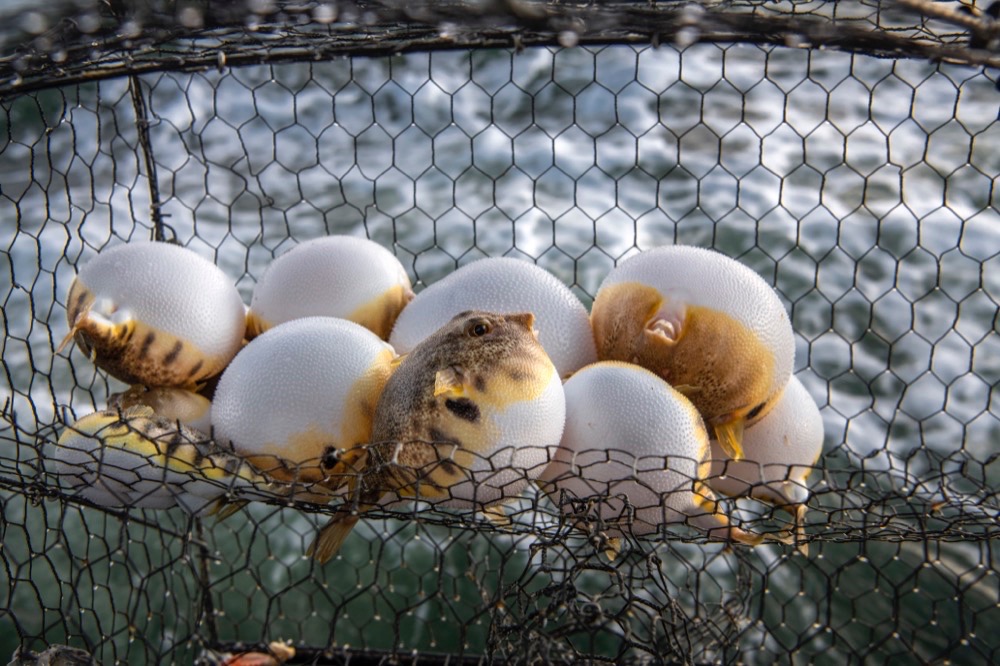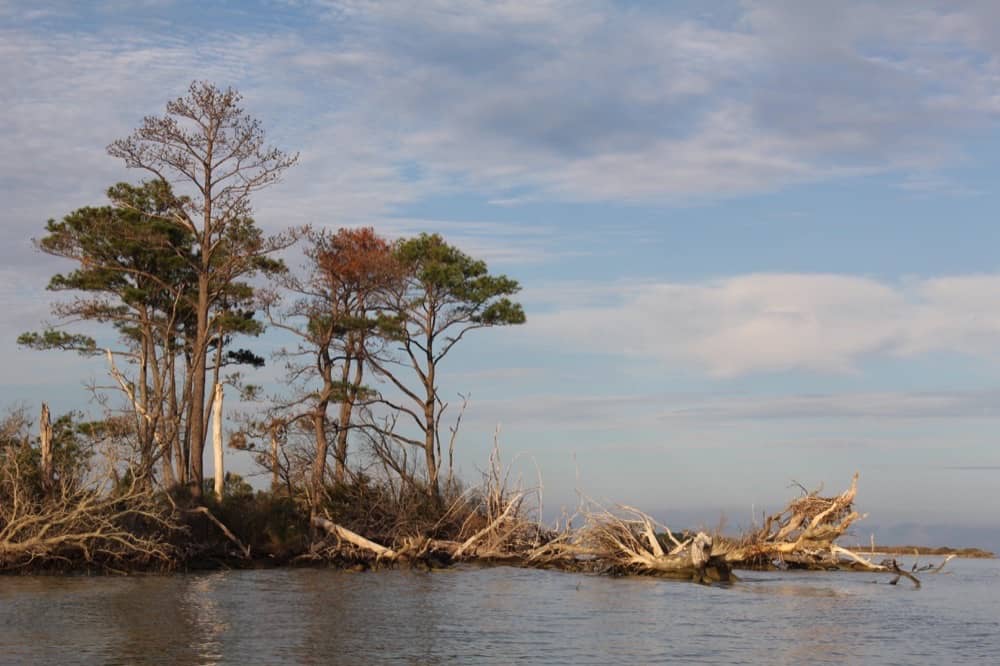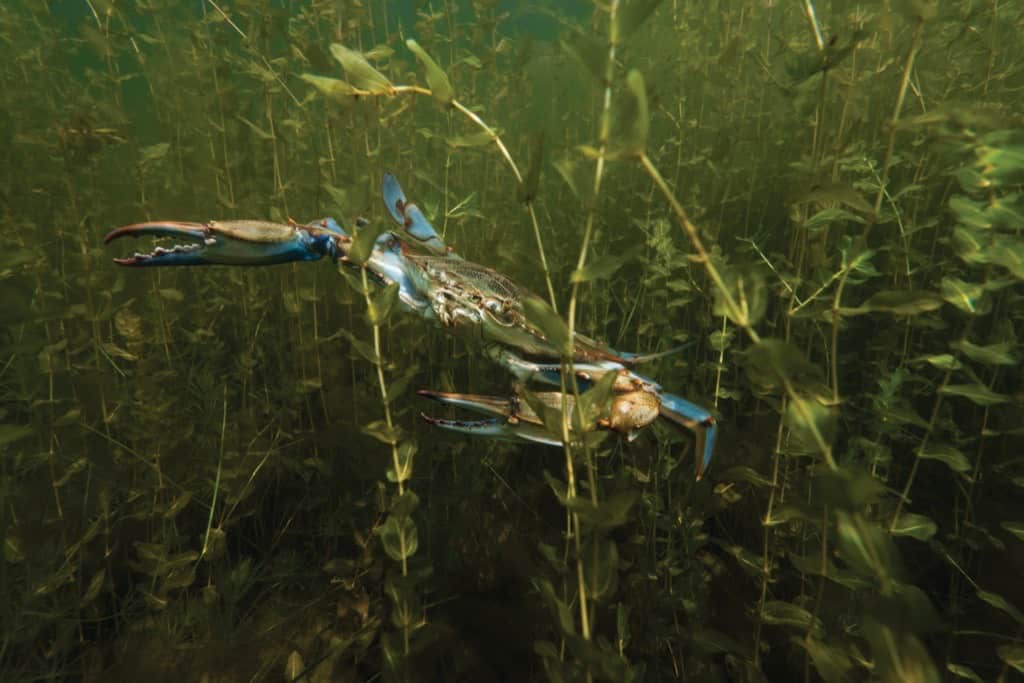Bay’s pufferfish are a little-known treat
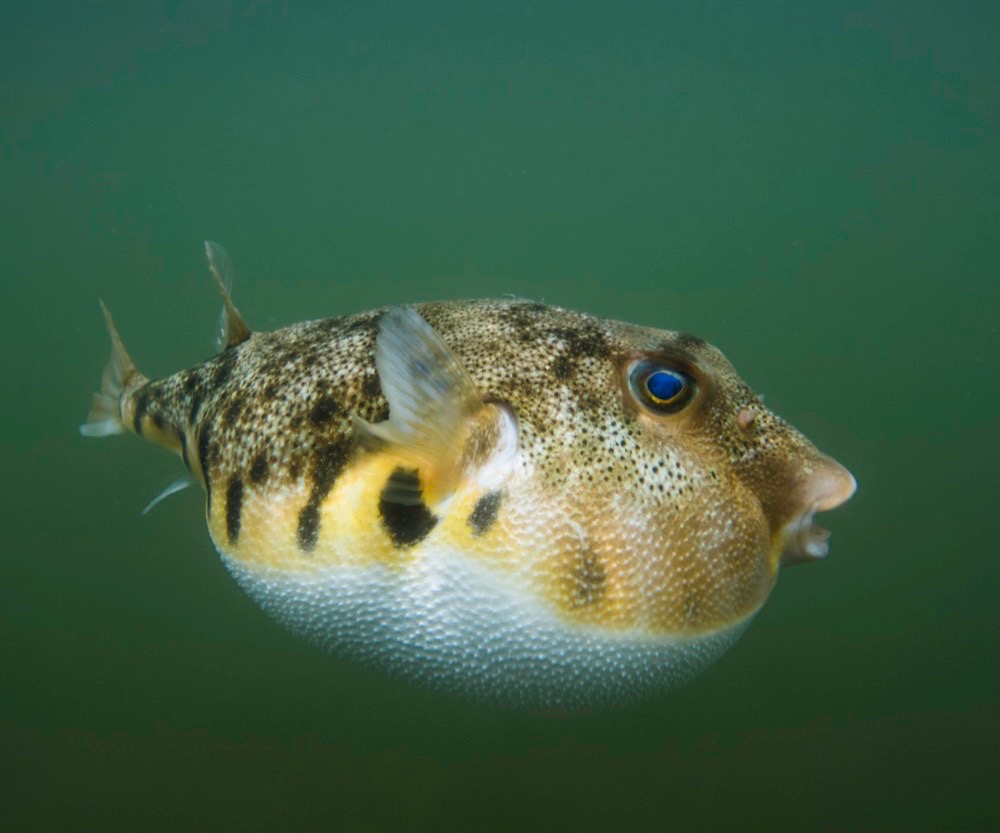
Northern pufferfish, often called “swelling toads,” “sugar toads” or “sea squab,” are one of the Chesapeake’s most intriguing fish. These 8- to 10-inch box-shaped fish with emerald green eyes range from Florida to Newfoundland and come into Chesapeake waters in the early spring as they prepare to spawn around hard structure in the shallows of the mid and lower Bay. Toads hang out in local waters until early to mid-November, when the temperature drops below 50 degrees. They feed on crustaceans and shellfish by crushing through the shells with their strong, beak-like teeth. Coarse skin, like heavy grit sandpaper, is the fish’s armor against predators, but when toads feel threatened, they will deploy their most distinctive defense—inflating themselves with water or air so that they are too large to eat whole. Watermen in the Chesapeake Bay target northern pufferfish, or swelling toads, by setting “toad pots” baited with crab scraps near oyster reefs, shipwrecks, and other underwater structures where the fish tend to congregate. Toad pots are similar to traditional hard crab pots, with a smaller wire mesh. Because swelling toads can eventually find their way out of a pot’s funnels, watermen must continually fish their pots throughout the day and without letting them “soak,” or sit for long periods of time. Once a toad pot is pulled to the surface, the startled creatures inflate themselves with air. Sometimes, a pot full of toads can even float on the surface. Sugar toads are also a bycatch for pound netters and haul seiners in the mid and lower Chesapeake. Recreational fishermen using bait such as peeler crabs or bloodworms will occasionally catch toads.
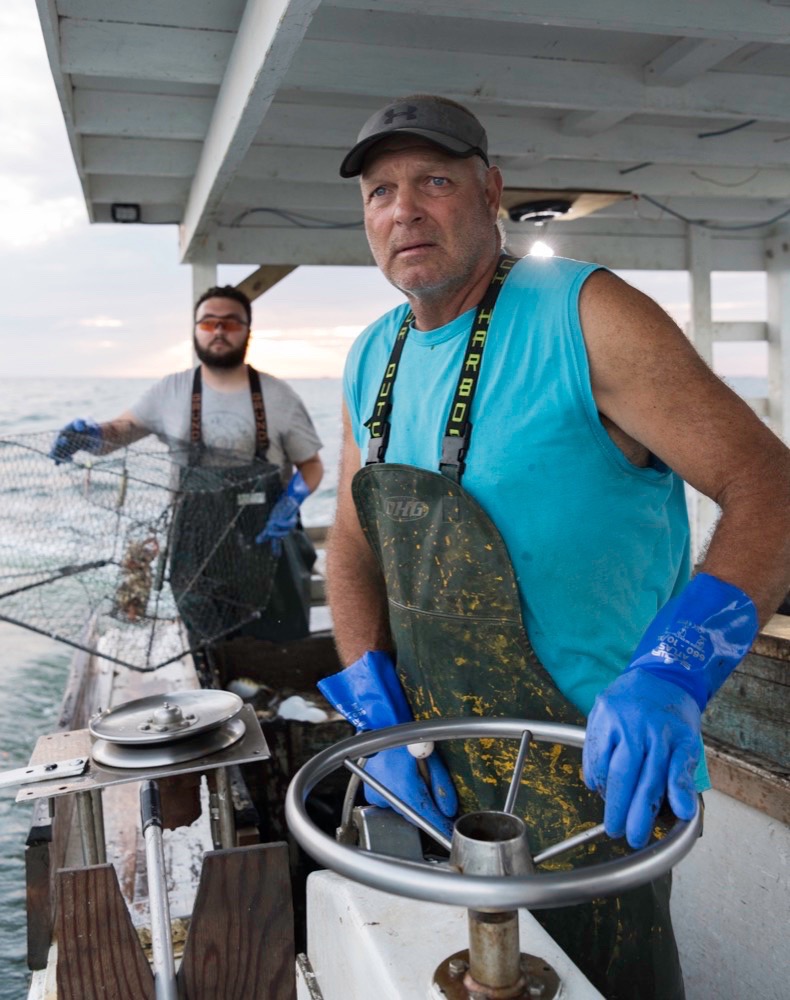
near underwater structures.
After World War II, watermen perfected the art of catching the sly swelling toads in peeler pots. Toads were abundant and the fishery was lucrative for many watermen. Multiple packing houses in Crisfield, Md. diversified their operations from processing crabmeat from April to November to include the popular delicacy. In the mid-1960s, however, the toads became more scarce, and in 1964 the processing houses abandoned their efforts. The large-scale fishery became a thing of the past and has never come back.
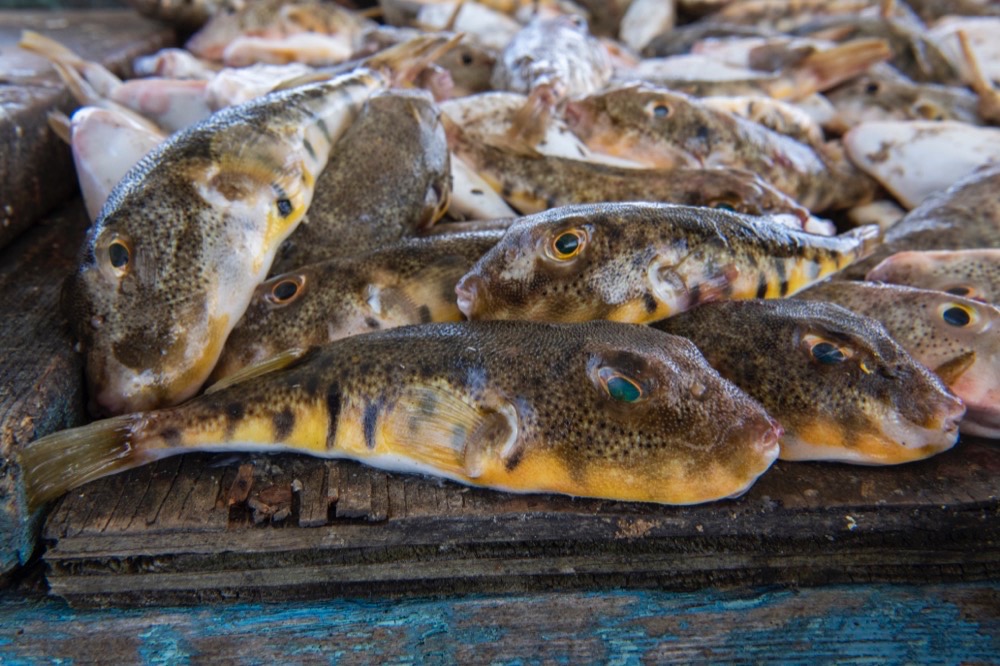
Unlike other species of pufferfish, the northern pufferfish is not poisonous and is safe for human consumption. Watermen process the toads for commercial sale by removing the sandpaper-like skin and head, leaving behind the meat and bones of the tail section. Although the process is tedious, cleaned toad tails fetch a higher price per pound relative to other fish caught commercially in the Chesapeake Bay. The meat in the tail section is sweet and delicate. Tails are typically fried whole and eaten off the bone like a chicken wing, hence another of their many nicknames, “Chicken of the Sea.”
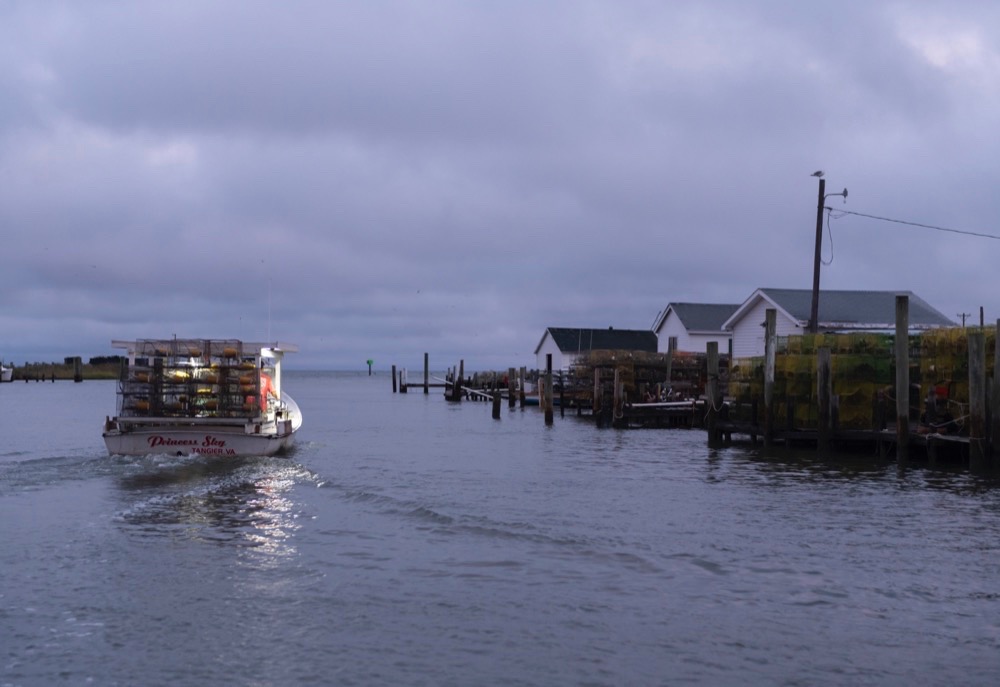
Fried sugar toads will occasionally pop up on seasonal menus of high-end restaurants in Baltimore, Washington D.C., and Richmond, but the most consistent place to find them during the summer months is at the Exmore Diner on the Eastern Shore of Virginia. This hidden gem of a restaurant employs local watermen to catch the seasonal delicacy. During years of abundance, toads will create a buzz amongst those who wait for this Chesapeake delicacy.

